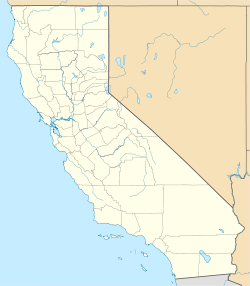| Parent Washington Navel Orange Tree | |
|---|---|
 Parent Washington Navel Orange Tree | |
| Location | Corner of Magnolia and Arlington Avenues, Riverside, California |
| Coordinates | 33°56′46″N117°24′06″W / 33.946059°N 117.401716°W |
| Built | 1873 |
| Designated | June 1, 1932 |
| Reference no. | 20 |
The Parent Washington Navel Orange Tree is a tree grown by Eliza Tibbets in Riverside, California, in 1873. The Riverside County tree was designated a California Historic Landmark (No.20) on June 1, 1932, at the corner of Magnolia and Arlington Avenues, Riverside. [1] The Bahia, Brazil, Washington navel orange was brought to the United States by the U.S. Department of Agriculture in 1870. The Department of Agriculture imported twelve trees; from these trees, some buds were grafted on to California sweet orange trees. The Washington Navel Orange is also called California Navel Orange. [2]
Contents
The navel orange is a mutation of regular sweet orange. This mutated orange was discovered in a monastery orchard in Brazil in 1820. [3] In 1870 a cutting from the navel orange was sent to Washington, D.C., thus was called the Washington navel orange. The name "navel orange" is from the mutation at the bottom blossom end of the orange. The bottom of the orange has a depression which looks like a human belly button. The mutation gives the navel orange no seeds. The Washington navel oranges were shipped all over the United States. As oranges cannot withstand freezing weather, the climate of Southern California is good for the Californian citrus industry and the navel orange. [4]
In April 2018, a white cloth was draped over the tree to prevent it from being infected by citrus greening disease. The cloth was replaced with a 22' tall x 25' x 25' tent with an insect screen in June 2019. Maintenance is the joint responsibility of UC Riverside and the City of Riverside Parks Department. [5] A 1940's era navel orange tree and grapefruit tree were also removed in April 2019 after they were found to not have significant historic value. [6]



